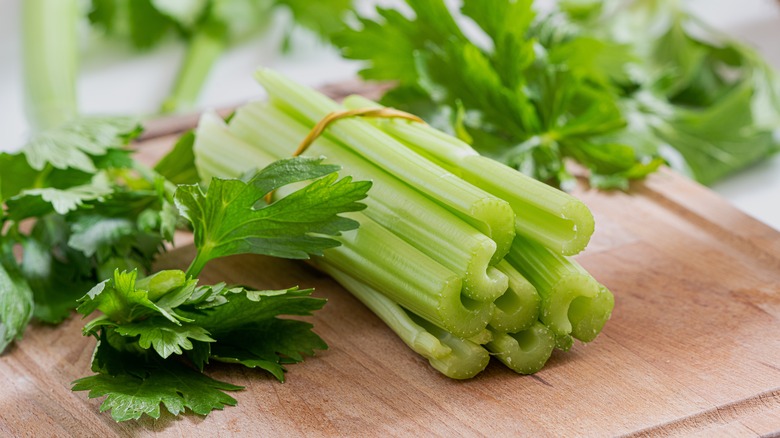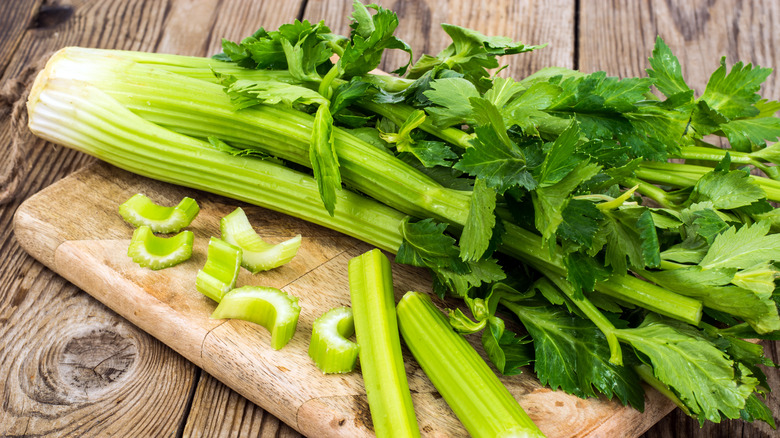The Last Thing To Do Before Throwing Away Celery Leaves
The humble celery stalk has more to offer than you may have thought. We'd like to complete celery's transition from a crunchy, mildly-flavored afterthought to an indispensable culinary ingredient by focusing on the one part of the plant that's usually reserved for the compost pile: its leaves. It turns out that celery leaves are a cook's secret weapon. High in vitamin C, calcium, and magnesium, they make a nutritious additive to homemade stocks and soups, a slightly bitter minced garnish, or a fascinating take on a classic pesto recipe.
You've probably got some celery in your fridge right now, whether to munch with peanut butter or use in a mirepoix. If you haven't picked and discarded the leaves, look at them a little more closely. There are pale leaves in the middle of the bunch and darker, leafier ones at the top. Unsurprisingly, these two kinds of leaves have different flavor profiles and uses — the lighter ones offer a more delicate flavor, while the darker ones are more robust and astringent.
Choosing and using celery leaves
If you'd like to start cooking with celery leaves, be sure to pick a full bunch with the dark green outer stalks intact (trimmed celery hearts will only contain the lighter inner leaves). Look for leaves that are an attractive dark green without any blemishes. Pick them off the bunch and store them, refrigerated, in a small plastic bag lined with a damp paper towel.
The easiest thing to do with either the light or dark celery leaves is to pitch them into the stock pot with other aromatic vegetables or mince them along with the stalks when preparing any soup or stew that calls for celery. Doing so will add a more intense celery flavor to these preparations. But celery leaves can also stand on their own as a garnish or even a feature.
If you're going to do more than use celery leaves in soups and stews, the darker leaves are more pungently-flavored and will stand up better. Dry them in the oven and make celery salt, or mince them for a Mediterranean chickpea salad. A number of chefs like to feature them in pesto in lieu of basil leaves. If you're into the milder taste of the inner leaves, consider using them to garnish your next batch of deviled eggs. Celery leaves are so nutritious, tasty, and versatile, you'll just have to find something else to compost.

